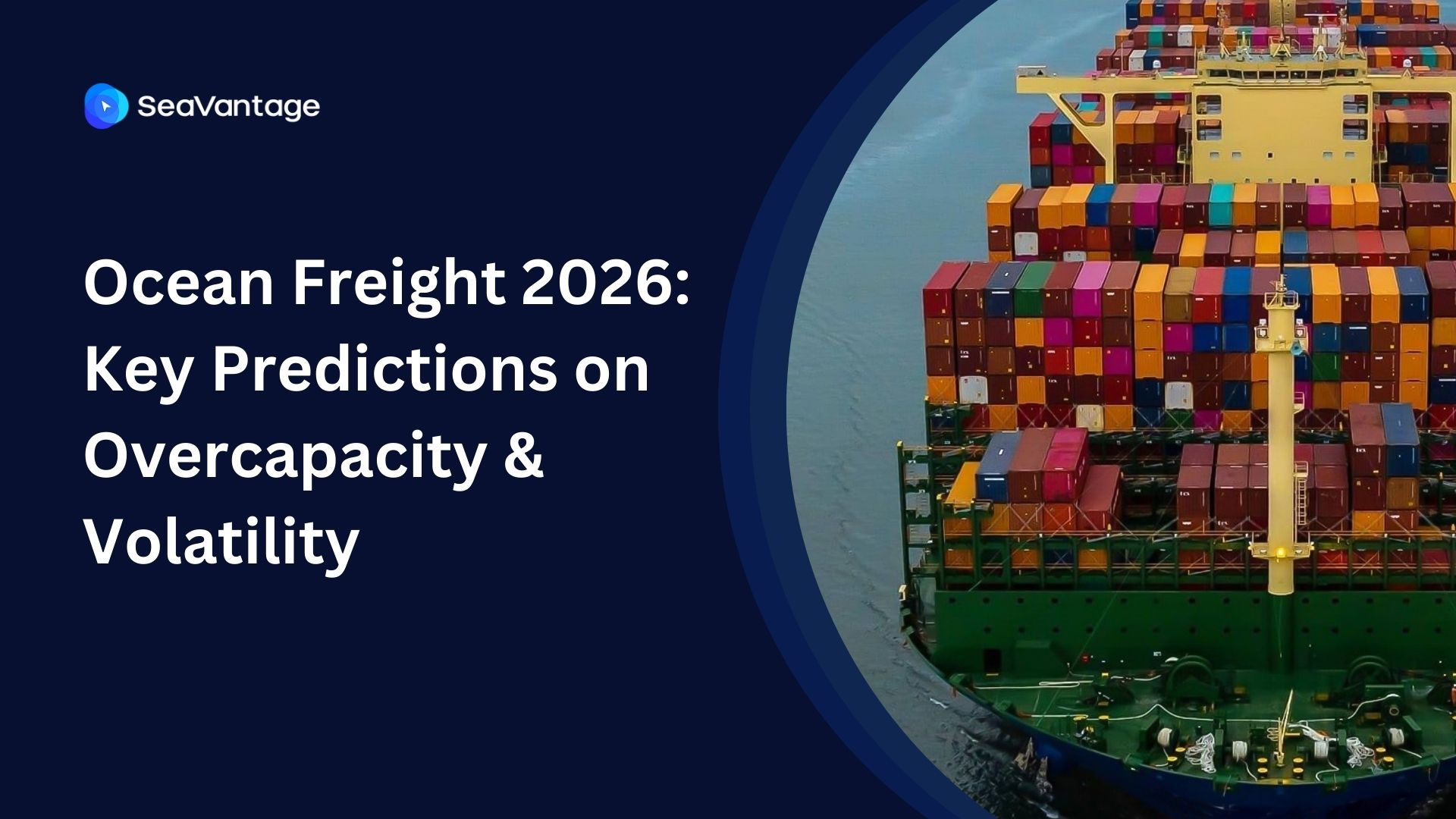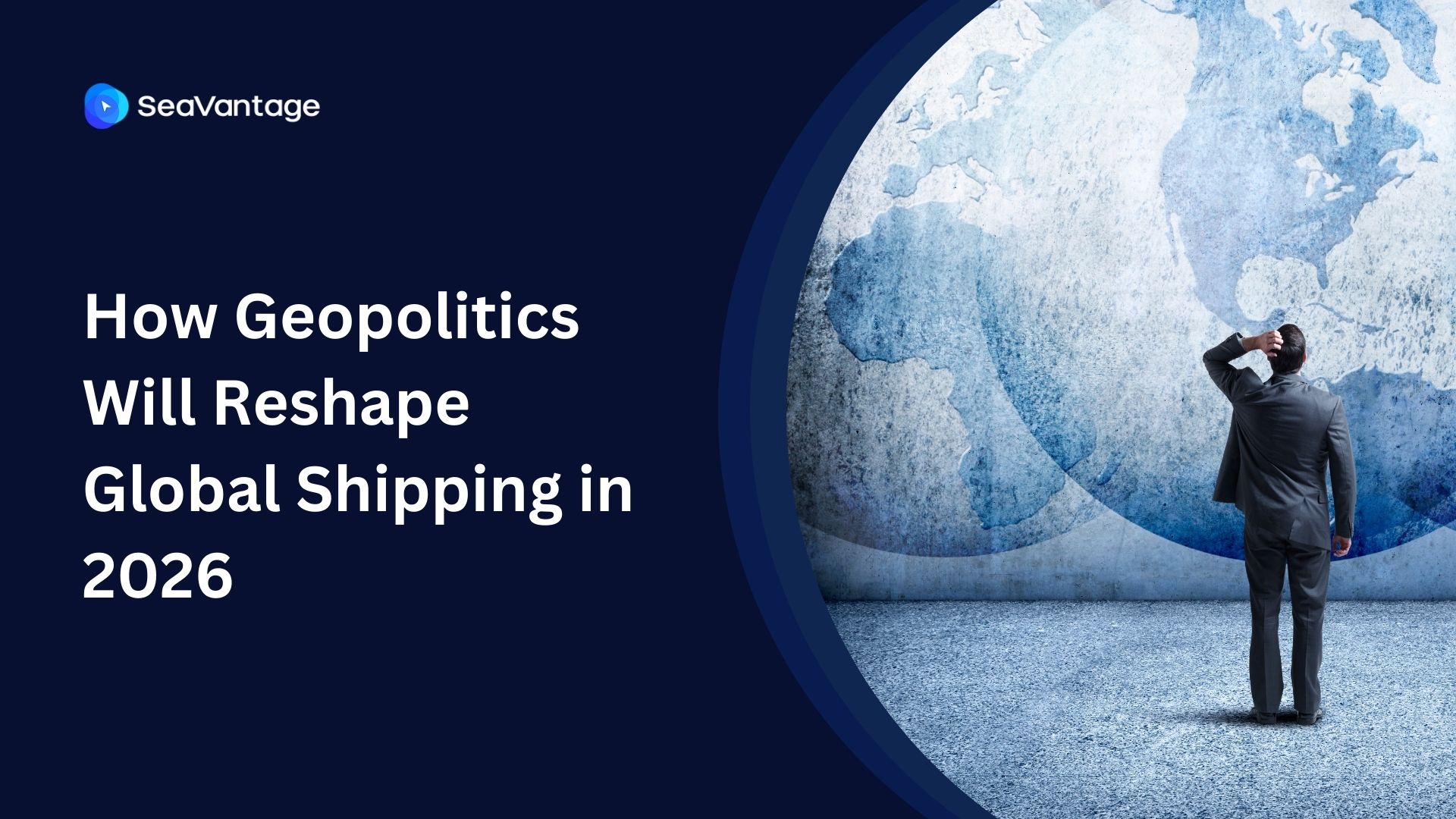How Geopolitics Will Reshape Global Shipping in 2026
.jpg)
In global logistics, what were once considered exceptional “black swan events” have become the new norm. The relentless stream of disruptions, from the Red Sea crisis forcing massive route diversions to the unpredictable ebb and flow of trade tariffs, has created an environment of persistent uncertainty for supply chain leaders. This state of flux demands a forward-looking perspective, moving beyond immediate fire-fighting to anticipate the next wave of change.
This article synthesizes expert insights to unpack the major forces set to redefine ocean freight logistics and costs into 2026. By examining the interplay of trade policy, shifting sourcing patterns, and paradoxical capacity shifts, we can better understand the landscape ahead. We will explore why excess capacity, once a sign of miscalculation, became a saving grace, and how the return to normalcy in a vital waterway could trigger unprecedented logistical chaos.
The Tariff Tightrope: Navigating Unpredictable Trade Policies
While the magnitude of US trade tariffs has drawn headlines, the primary source of volatility for importers is the sheer volume and constancy of the changes. This relentless unpredictability, more than any single percentage point, has become a significant disruptive force in the ocean freight market.
This uncertainty is amplified by the complete erosion of grace periods, which once provided a buffer for in-transit cargo. Now, with tariffs able to change mid-voyage, importers are truly “flying blind,” making it nearly impossible to forecast landed costs with any degree of certainty. As industry expert Lars Jensen notes, this creates a chilling effect on import decisions.
"For the importers you are basically flying blind if I buy goods say in India and I ship tariffs could change while my cargo is on sea i have no visibility on what my landing cost is going to be which then leads to this massive hesitation on the importers not really to import anything unless absolutely necessary."
The Great Sourcing Shift: "China Plus One" Becomes "China Plus Many"
The trend of diversifying sourcing away from a sole reliance on China is not a new phenomenon; it is a long-term strategic movement that has been underway for over a decade. However, recent trade wars have acted as a powerful "accelerant," amplifying and speeding up this existing trend rather than creating it.
The scale of this shift is significant, reshaping global trade lanes and import patterns into the US. Key data points illustrate this ongoing transformation:
• China's share of US imports has fallen below 40% for the first time.
• Vietnam now exports more to the US than the entire European Union combined.
• Thailand's share of US imports has more than doubled in less than 10 years.
• Cambodia's share has grown six-fold over the same period.
This shift requires more than a new pin on the map; it demands a time-based strategy. As experts note, destinations like Vietnam, with more developed infrastructure, are suited for immediate or short-term diversification. In contrast, emerging hubs like Cambodia or India represent longer-term plays, where companies must weigh the benefits against the current readiness of inland logistics.
The Suez Canal Paradox: Why Reopening a Vital Waterway Will Cause Global Chaos
The potential reopening of the Suez Canal to normal traffic is, fundamentally, a positive development for global trade. However, its immediate aftermath will trigger significant, albeit temporary, logistical chaos. The core problem is one of timing and volume: a massive influx of vessels, rerouted from the longer journey around Africa, will descend on European ports simultaneously, effectively delivering twice the amount of cargo in a single week. This tsunami of goods will overwhelm not just port operations but also inland logistics, as importers question whether their warehouses can physically accept double the volume of inventory.
This sudden surge will create cascading ripple effects that extend far beyond Europe, making it a global issue. The primary consequences include:
• Massive port congestion and the likelihood of new surcharges in Europe.
• Disruptions to the Atlantic trade into Europe, as well as services to South America and Africa.
• Impacts on the US East Coast, as some Asia-US East Coast services are routed around Africa and will be directly affected by the shift back through Suez.
• Widespread equipment shortages in Asia as containers and vessels get tied up in congested European ports.
If this disruptive event were to coincide with a large-scale inventory restocking effort in the US, the combined pressure on capacity could cause freight rates to spike dramatically.
A Flood of Steel: The Looming Specter of Overcapacity
Underneath the daily volatility, the ocean freight market is heading into a normal cyclical downturn driven by a massive influx of new vessel capacity. In 2026 alone, an additional 5% of the total global fleet capacity is expected to be delivered.
However, a counterintuitive analysis reveals this overcapacity is not simply a case of poor planning. In fact, this excess capacity recently proved to be a critical source of resilience for global supply chains. As Lars Jensen reflects, what was once seen as a strategic misstep became a saving grace.
"Red sea crisis rolls around and suddenly what were they were laughed at for over capacity that was the necessary capacity we needed to divert around Africa had we not had that level of over capacity it would have been physically impossible."
Furthermore, carrier discipline has evolved. It's crucial to distinguish between two types of capacity management: deliberate blank sailings used in a weak market to prop up rates, and necessary blank sailings that occur when port congestion or other disruptions physically prevent a vessel from being available. Understanding this distinction is key to accurately reading market signals in 2026.
Building Resilience in an Unpredictable World
The defining feature of the ocean freight market into 2026 is volatility, driven not by a single factor but by the complex interaction of geopolitical shocks, unpredictable trade policies, and fundamental supply-demand imbalances. The coming years will demand navigating a landscape of contradictions: a market simultaneously facing a glut of vessel capacity that provides resilience, trade policies that demand agility, and the reopening of a critical artery that threatens to clog the system. The challenge is not just weathering individual storms but mastering the currents created by their convergence.
As these powerful forces converge, the fundamental question for every business is no longer if the next disruption will happen, but how resilient is your supply chain when it does?
2025년 9월, 주요 글로벌 항만에서 어떤 운송사가 가장 긴 선박 체류 시간을 기록했는지 확인해보세요. 트렌드를 비교하고, 지연을 파악하며, 전체 항만 데이터를 통해 운송 전략을 최적화할 수 있습니다.
2025년 8월, 주요 글로벌 항만에서 어떤 운송사가 가장 긴 선박 체류 시간을 기록했는지 확인해보세요. 트렌드를 비교하고, 지연을 파악하며, 전체 항만 데이터를 통해 운송 전략을 최적화할 수 있습니다.
2025년 7월, 주요 글로벌 항만에서 어떤 운송사가 가장 긴 선박 체류 시간을 기록했는지 확인해보세요. 트렌드를 비교하고, 지연을 파악하며, 전체 항만 데이터를 통해 운송 전략을 최적화할 수 있습니다.
Discover the top ocean freight predictions for 2026, from ship overcapacity to Suez Canal disruption, global sourcing shifts, and strategies for volatility.
Discover why container tracking breaks under complexity. Learn how B/L-based visibility improves ETA accuracy, boosts productivity, cuts TCO, and reduces data loss.
Discover how geopolitical tensions, tariff volatility, sourcing shifts, and the Suez Canal reopening are reshaping global shipping costs and logistics into 2026.



.svg)






.png)